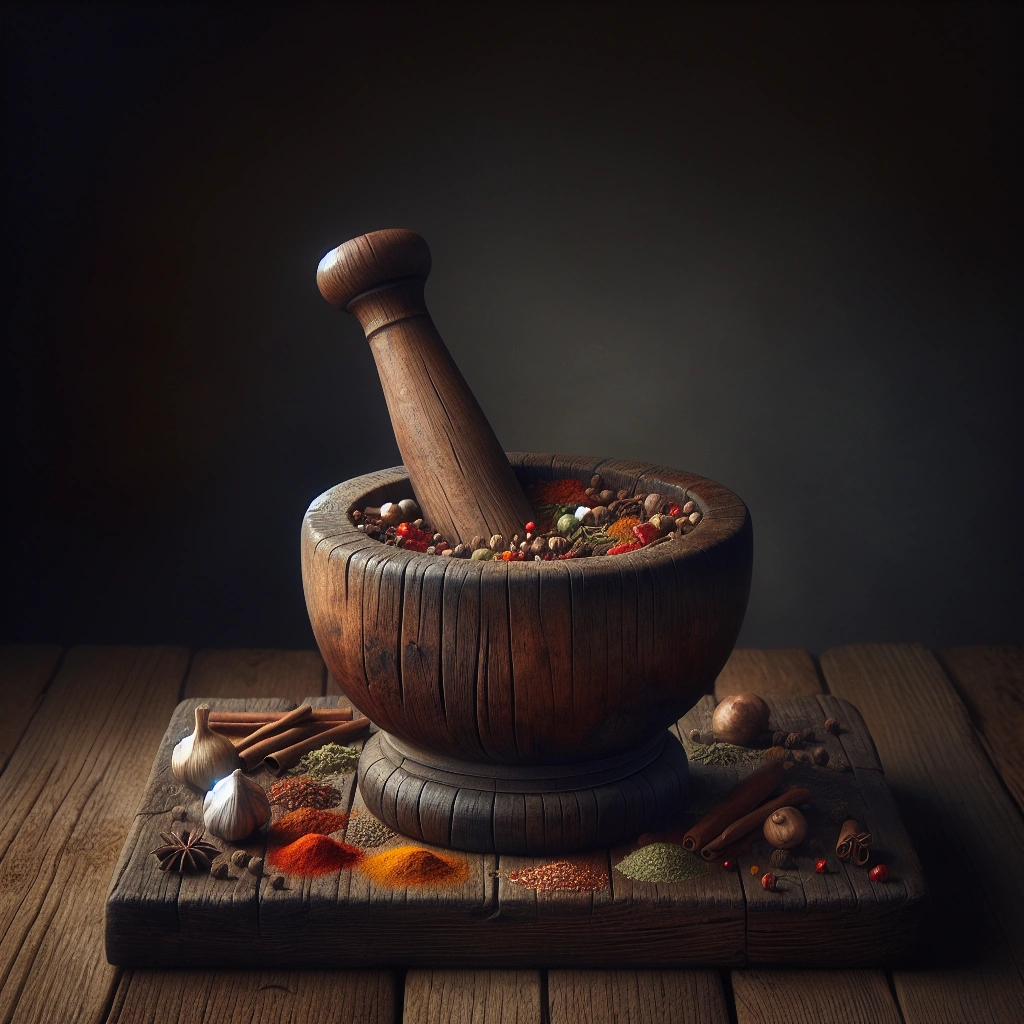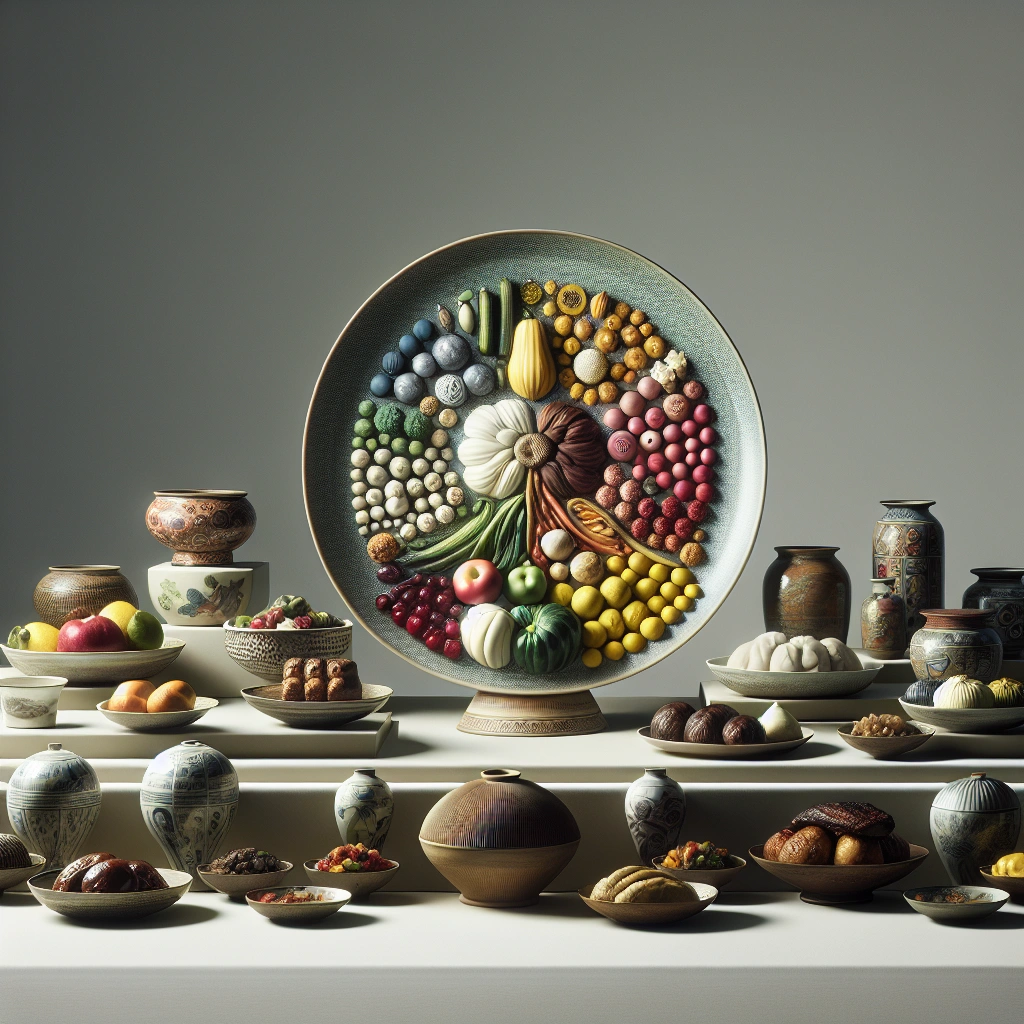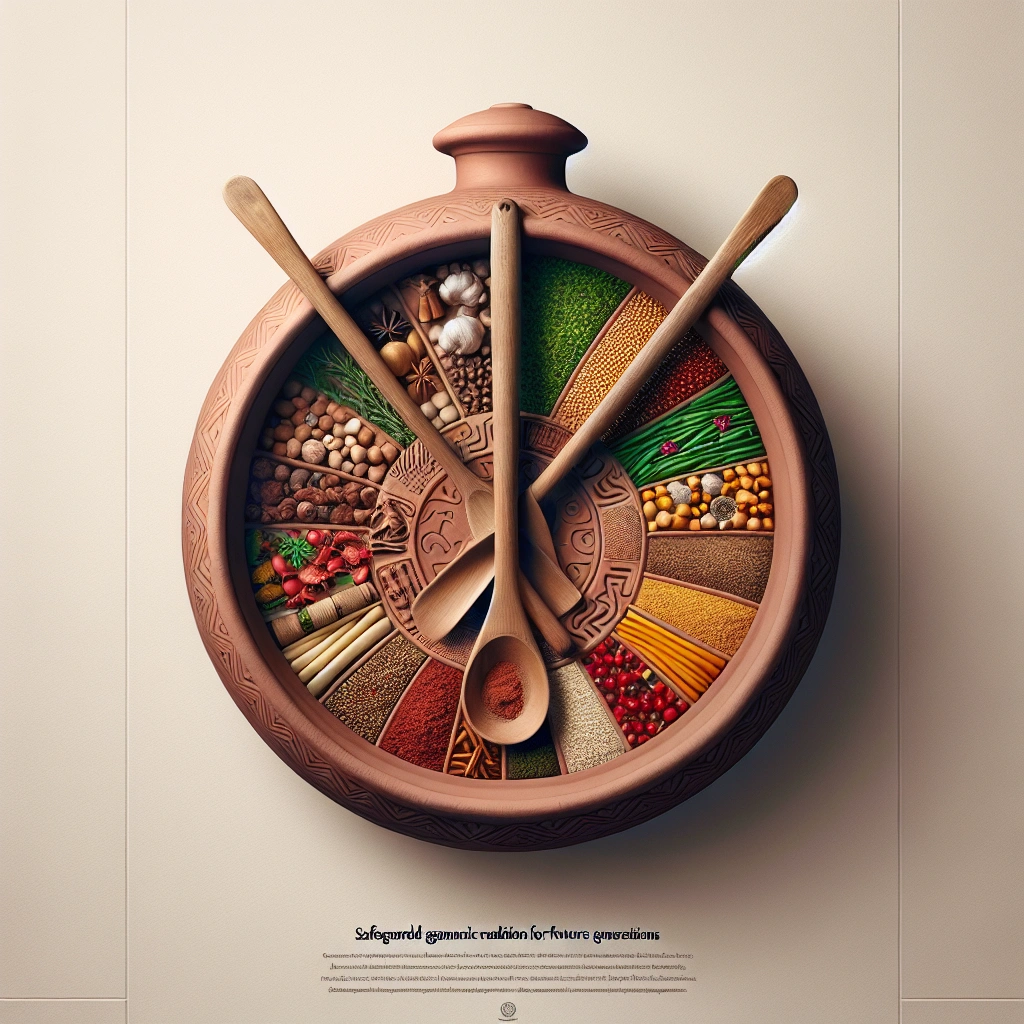Short Answer for What Is the UNESCO Food Heritage List?
The UNESCO Food Heritage List celebrates globally recognized culinary traditions that have unique cultural significance and embody the identity and traditions of communities, aiming to preserve and share these intangible cultural heritages with the world.
Imagine sitting at a table where every dish tells a story, a narrative so rich that it traces back centuries, embodying the spirit of entire communities. The UNESCO Food Heritage List is that table, a celebration of culinary traditions so unique, they’re recognized globally for their cultural significance. It’s not just about what’s on your plate; it’s about preserving a heritage that shapes identities and unites communities across the globe. From the vibrant flavors of Kimjang in Korea to the communal making of Couscous in North Africa, each listed tradition invites us to a feast that goes beyond taste-into the heart of what it means to share, live, and thrive together. This is your ticket to a global culinary journey, where each bite tells a story of creativity, legacy, and communal harmony. Prepare to be transported by the power of food that does more than just satisfy hunger-it nourishes the soul.
-
The UNESCO Food Heritage List celebrates unique, authentic culinary traditions with cultural significance, embodying the identity and traditions of communities.
-
Criteria for inclusion include uniqueness, authenticity, cultural significance, and community involvement in keeping the tradition alive.
-
Being part of the list requires showcasing culinary genius, significant cultural exchanges, and passing a rigorous evaluation process.
-
Celebrated cuisines like the Mediterranean diet and Kimjang highlight the importance of well-being, community, and living in harmony with nature.
-
Preservation strategies involve digitizing recipes, educational programs, hosting food festivals, gastronomic tours, and collaboration with chefs and artisans.

UNESCO Food Heritage List: A Global Culinary Journey
The UNESCO Food Heritage List celebrates the rich diversity of culinary traditions worldwide, serving as a global journey through the most exquisite and culturally significant food practices. From the unique Kimchi of South Korea and Joumou Soup in Haiti to the communal making of Couscous in North Africa and the deep-rooted tradition of Belgian Beer culture, this list underscores the uniqueness, authenticity, and communal value of these practices, emphasizing how they embody the identity of their communities and have historical significance spanning generations. It highlights how food is more than mere sustenance; it’s a heritage that unites communities, signifies cultural identity, and showcases the enduring legacy of culinary traditions across the globe.
Exploring the diversity of culinary traditions on the list
Folks, let me tell you, the UNESCO Food Heritage List, it’s phenomenal. It’s not just about food; it’s about the best, the greatest culinary traditions out there. We’ve got everything from the Joumou Soup in Haiti to Kimchi in South Korea. It’s like a grand tour of the most incredible tastes around the globe without even leaving your kitchen. For example, the Belgian Beer culture, folks, it’s not just about the beer. It’s an art, a tradition handed down through generations. It’s incredible, really. Another example, Couscous in North Africa, it’s not just a dish; it’s a masterpiece of flavor, a culinary heritage that unites communities. It’s tremendous.
Key insights into the criteria for inclusion
Let me tell you, getting on this list, it’s not easy. It’s like championship-level for food traditions. First, it’s about uniqueness; your food tradition needs to be one of a kind, something you can’t just find anywhere. Second, it’s about authenticity. We’re talking about traditions that have history, heritage. They’re not just invented yesterday. Third, there’s cultural significance. These food traditions, they’re a way of life, embodying the identity and traditions of a community. And finally, folks, it’s about the community involvement. These traditions, they’re alive because the communities keep them going strong, passing the baton to the next generation. It’s pretty fantastic.
Ladies and gentlemen, this journey through the UNESCO Food Heritage List, it’s like the Olympics of culinary traditions. It showcases the best of the best, traditions that have stood the test of time and continue to dazzle us with their flavors, their history, and their ability to bring people together. It’s truly a global masterpiece. So, whether you’re savoring a slice of Baguette bread in France or experiencing the Tea culture in China, remember, it’s not just food; it’s heritage, it’s culture, it’s the flavor of humanity. And that, my friends, is something truly spectacular.

What Does It Take to Be Part of the UNESCO Food Heritage List?
To be part of the UNESCO Food Heritage List, a submission must embody a masterpiece of human creativity in the culinary realm, showcasing a significant cultural exchange and its impact on cooking, landscape design, or monumental arts over time. The food heritage should also serve as a testament to a living or lost cultural tradition or civilization, evidencing important phases in human history. Moreover, success in the rigorous nomination and evaluation process, including preparation of a comprehensive file and scrutiny by experts and the World Heritage Committee, is crucial for global recognition.
Examination of selection criteria
Ladies and gentlemen, let me tell you, it’s not just about having fantastic food. To join the elite “UNESCO Food Heritage List,” your contribution needs to be, frankly, incredible, absolutely incredible. Think about it like being admitted into the most luxurious, exclusive club in the world. First, your food heritage must represent a masterpiece of human creativity. We’re talking the crème de la crème of culinary genius here, folks.
But wait, there’s more. It should also showcase a significant exchange of human values over time or within a global cultural area, influencing developments in cooking, landscape design, or even monumental arts. Imagine, your grandmother’s secret recipe could potentially align with this, if it’s that good, of course.
Moreover, it must testify to a living or lost cultural tradition or civilization. So if your food heritage can tell a vibrant story of the human saga, you’re on the right track. Also, let’s not forget, it needs to be an outstanding example illustrating significant stages in human history. I mean, if your food culture doesn’t scream historical significance, what are we even doing here?
The process of nomination and evaluation
Now, getting onto this prestigious list is like running for president; the process is rigorous, believe me. First off, you’ve got to prepare a nomination file that’s more comprehensive than my business plans – and that’s saying something. This file is then submitted to the World Heritage Centre for review to make sure it’s as fantastic as you claim it to be. Check out the step by step guide here.
Next, expect an intense evaluation by experts. These are the top guys in the field, the best.
They’ll review your nomination, probably visit the site, and truly dig deep to see if your culinary heritage is indeed world-class. Their recommendations are then passed on to the World Heritage Committee, which, let’s be honest, holds the keys to the kingdom.
The committee meets annually to decide which nominations make the cut. It’s like the season finale of your favorite show – tensions are high, and not everyone makes it through.
But if your nomination is genius, just genius, you stand a chance of having your food heritage recognized globally. And let me tell you, that’s better than any Michelin star.
So, to wrap up, becoming part of the UNESCO Food Heritage List is about showcasing unparalleled culinary genius, demonstrating significant cultural exchanges, and passing a rigorous evaluation process. It’s tough, very tough, but the prestige?
Absolutely worth it.

Celebrated Cuisines: A Closer Look at UNESCO-Listed Culinary Traditions
UNESCO-listed culinary traditions like the Mediterranean diet and Kimjang not only showcase the rich tapestry of global cuisines but also emphasize the importance of food in promoting well-being, community, and harmony with nature. The Mediterranean diet, with its emphasis on fresh produce, whole grains, and olive oil, highlights the benefits of a balanced diet for heart health and longevity. In contrast, Kimjang, the communal making and sharing of kimchi in Korea, illustrates the deep cultural significance of food traditions in fostering community ties and preserving heritage.
The Mediterranean diet’s holistic approach to well-being
The Mediterranean diet is not just food; it’s a grand lifestyle, folks. This diet is like the secret recipe to living longer, and who doesn’t want that? It’s a holistic approach, emphasizing balance, taste, and the richness of nutrients. We’re talking fruits, vegetables, nuts, whole grains, and, yes, a splash of olive oil, because everything’s better with olive oil. It’s the kind of diet that makes your heart strong, keeps your brain sharp, and folks, it could probably make you look better in a swimsuit too. For an in-depth dive, have a look at this comprehensive study from NCBI.
Another example of its greatness is how it manages blood pressure. Did you know citrus fruits like grapefruits, oranges, and lemons, which are staples of this diet, can dramatically lower blood pressure?
Talk about a natural remedy!
Kimjang: The communal spirit of Korean kimchi making
Now, let’s travel from the sunny shores of the Mediterranean to the vibrant culture of Korea with Kimjang. This isn’t just about making kimchi; it’s a masterpiece of community spirit. Imagine the entire neighborhood coming together, sharing stories, and creating something truly magical – that’s Kimjang. It’s a tradition that stretches back centuries, binding families and communities tighter than a jar of well-fermented kimchi. It teaches us about harmony with nature and the beauty of co-working. To understand more about Kimjang’s profound impact on Korean identity and culture, check out this detailed piece by UNESCO.
Kimjang isn’t just about fermentation; it’s about the fermentation of relationships, turning neighbors into family. And, let’s be honest, anything that makes food this delicious while bringing people together is, without a doubt, genius.
| Keyword | Explanation |
|---|---|
| Mediterranean Diet | A diet emphasizing fruits, vegetables, whole grains, and olive oil, with proven benefits for heart and longevity. |
| Kimjang | A communal event in Korea celebrating the making and sharing of kimchi. |
Whether it’s the Mediterranean diet or Kimjang, these UNESCO-listed culinary traditions are not just about food. They’re about well-being, community, and living in harmony with nature.
They show us the world is truly a small place when we sit down to eat. So, let’s embrace these traditions and maybe, just maybe, make our lives a little richer.

Safeguarding Gastronomic Traditions for Future Generations
Safeguarding gastronomic traditions for future generations involves modern and traditional methods, from digitizing recipes and culinary techniques to engaging in hands-on educational programs and global promotions. Efforts like food festivals, gastronomic tours, and collaborations with local chefs and artisans showcase the significance of UNESCO-listed foods while highlighting their cultural identity and heritage. Support from the government and private sector through financial aid and policies ensures the preservation and appreciation of these culinary traditions, aiding in their survival and relevance for many years to come.
Strategies for preservation and promotion
Preserving and promoting the UNESCO food heritage list is like making sure your grandma’s secret recipes get the respect they deserve on a global stage. It’s huge. It’s about keeping the culinary traditions alive for the kids and grandkids who haven’t even learned to appreciate a good lasagna yet. Here’s the game plan:
-
Digitize Recipes and Techniques: We’re in the digital age, folks! Recording the oral history, techniques, and recipes of traditional dishes is a no-brainer. It’s like making your food immortal on the internet. For example, by creating online platforms dedicated to culinary heritage, like blogs or YouTube channels.
-
Educational Programs: Schools need to step up by incorporating culinary heritage into their curriculum. Imagine kids learning about the UNESCO food heritage list the same way they learn about algebra. Mind-blowing, but crucial!
-
Food Festivals and Events: Nothing says ‘celebrate our culinary heritage’ like a food festival. It brings attention, tourism, and a deeper appreciation of traditional cuisines. It’s a win-win-win!
-
Gastronomic Tours: People love to eat and travel. Combine the two, and you’ve got a recipe for success. Gastronomic tours dedicated to UNESCO-listed foods can educate and tantalize the taste buds.
-
Collaboration with Local Chefs and Artisans: These people are the keepers of culinary secrets. Engaging them in workshops and collaborations can breathe new life into traditional recipes and techniques.
-
Government and Private Sector Support: Financial and policy support is crucial. It’s like the secret sauce. Subsidies, grants, and promotions can go a long way in preserving our culinary heritage.
Case studies of successful safeguarding practices
Let’s look at some champions of the culinary world who’ve made it onto the UNESCO food heritage list and kept their traditions thriving:
-
The Washoku of Japan: Celebrating the seasonal approach and aesthetic presentation, Japan has masterfully safeguarded Washoku, not just as a cuisine but as a philosophy of harmony in eating. Through educational programs and global promotion, Washoku has become a worldwide phenomenon.
-
The Mediterranean Diet: It’s not just about living longer; it’s about living better. The countries surrounding the Med have turned their traditional diet into a global blueprint for healthy living. Through vigorous promotion and education, the Mediterranean diet has been embraced globally for its health benefits and cultural significance.
-
Mexican traditional cuisine: Mexico has brilliantly showcased its traditional cuisine through global festivals, culinary tours, and a strong presence on social media. Their approach to engaging the younger generation and the global community has turned Mexican cuisine into a celebrated aspect of their cultural identity.
To sum it up, safeguarding gastronomic traditions for future generations is about keeping the story of our ancestors alive through their food. It’s a Herculean task that needs creativity, collaboration, and a whole lot of passion.
But it’s worth every bite.
| Strategy | Description | Examples |
|---|---|---|
| Digitize Recipes and Techniques | Creating online platforms to immortalize traditional dishes and techniques. | Blogs, YouTube channels dedicated to culinary heritage. |
| Educational Programs | Incorporating culinary heritage into the school curriculum. | Teaching UNESCO food heritage list in schools. |
| Food Festivals and Events | Utilizing festivals to celebrate and bring attention to traditional cuisines. | Food festivals focusing on traditional cuisines. |
| Gastronomic Tours | Combining travel and eating to educate and engage with traditional foods. | Tours dedicated to UNESCO-listed foods. |
| Collaboration with Local Chefs and Artisans | Engaging key culinary figures in workshops and collaborations. | Workshops with chefs and artisans on traditional recipes. |
| Government and Private Sector Support | Obtaining financial and policy support for preservation efforts. | Subsidies, grants, and promotional support for culinary heritage. |
| Case Study | Cultural Element | Action Taken |
| The Washoku of Japan | Seasonal approach and aesthetic presentation in cuisine. | Educational programs and global promotion. |
| The Mediterranean Diet | Traditional diet embraced globally for health and culture. | Vigorous promotion and education. |
| Mexican traditional cuisine | Celebrated aspect of cultural identity through cuisine. | Global festivals, culinary tours, social media engagement. |

Conclusion
The UNESCO Food Heritage List stands as a testament to the world’s rich and diverse culinary traditions, celebrating not only the extraordinary tastes but also the deep cultural significance and heritage behind them. From the art of Belgian beer to the communal spirit of Kimjang in Korea, this list is a reminder of how food is much more than nourishment; it’s a bridge between generations and a vibrant expression of humanity’s creativity and communal spirit.
Achieving a spot on the list requires a showcase of uniqueness, authenticity, cultural significance, and community involvement, proving that these culinary traditions are indeed the best of the best. It’s not just about having fantastic food; it’s about representing a masterpiece of human creativity and the exchange of human values over time, playing a crucial role in the cultural fabric of communities around the globe.
Thus, safeguarding these gastronomic traditions for future generations is crucial. Efforts like digitization, educational programs, food festivals, and governmental support are essential strategies to ensure that these treasures are preserved and celebrated.
As we embrace and promote these culinary heritages, we enrich our global tapestry, fostering a deeper appreciation for the flavors, stories, and cultural identities that connect us all.
